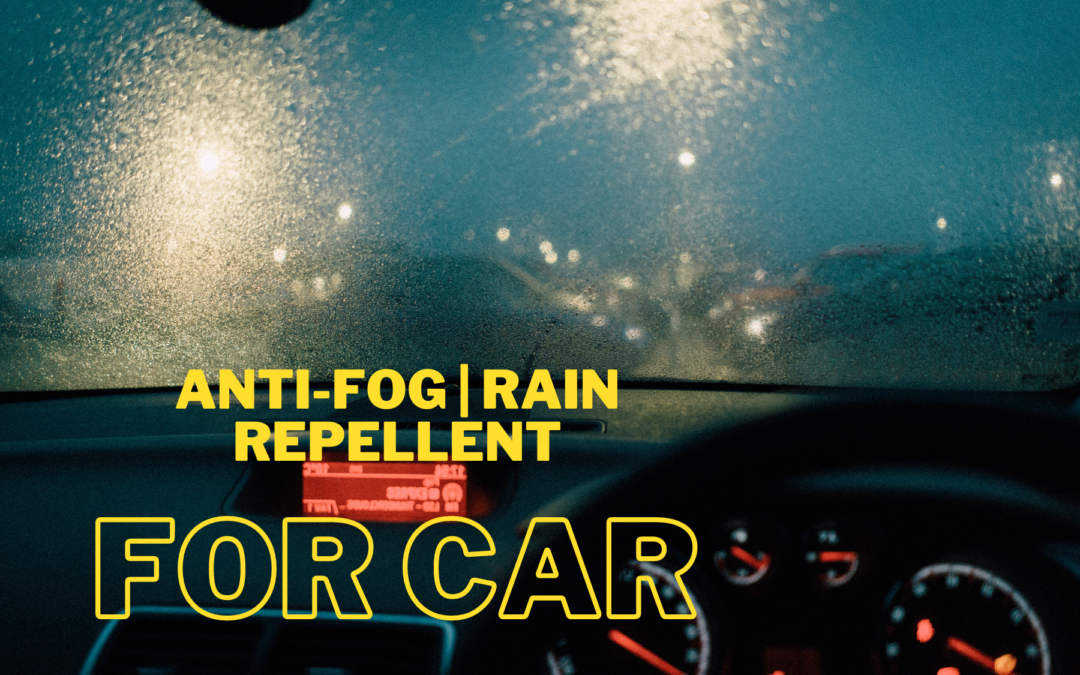Enhancing Your Driving Experience
Driving in the rain may be a stressful experience, plagued with reduced sight, increased stopping distances, and the ongoing battle against water running down your windshield. One of the most effective ways to increase driving safety and comfort in such conditions is by utilizing automobile rain repellent. This article will discuss the ins and outs of automotive rain repellent, its benefits, types, application methods, and maintenance suggestions. Whether you’re a seasoned driver or a newbie, understanding how to apply rain repellent can dramatically enhance your driving experience.
Top Rated – Car Windshield Rain Repellent
1. Turtle Wax ClearVue Rain Repellent

ORDER NOW– Get it Delivered
2. Wavex Rain Repellent

Order Now – Get It Delivered
3. Grab Kart Anti Rain Spray for Car Windshield

Order Now – Get It Delivered
4. Rain-X Repellent Glass Treatment

Order Now – Get It Delivered
5. 3M Car Glass Cleaner

Order Now – Get It Delivered
6. ShineXPro Windshield Washer For Car

Order Now – Get It Delivered
7. KLEARFOG Anti-Fog Solution for Car windshield

Order Now – Get It Delivered
8. Maple car care Anti- Fog Rain Repellent Spray

Order Now – Get It Delivered
Know more about Rain Repellent’s & Anti-Fog Solutions:
What is Car Rain Repellent?
A chemical treatment known as “car rain repellent” is applied to a vehicle’s outside glass surfaces, including the windshield, side windows, and rear windows. Its main purpose is to repel water, so that instead of spreading out and forming a sheet of water, it beads up and rolls off the glass. When it rains, this beading effect increases visibility, which makes driving safer and more comfortable.
How Does It Work?
The hydrophobic qualities of rain repellents are the science behind them. These items lower the surface tension of water by applying a thin, transparent layer on a surface. As a result, water droplets condense into beads that are easier to remove with the help of the car’s motion and the windshield wipers. Additionally, the repellent layer reduces the cling of dirt, grime, and other impurities, preserving the cleanliness of your windshield for longer.
Benefits of Using Car Rain Repellent
1. Improved Visibility
When it comes to rain repellant, improved vision is the most obvious and instantaneous benefit. There is less danger of a water film accumulating on the glass since water droplets bead up and are swiftly removed by the wind or wipers. There is less chance of an accident since drivers can see pedestrians, objects, and other cars more clearly with this improved field of vision.
2. Increased Safety
Increased safety is closely correlated with improved visibility. You can adjust to abrupt changes in traffic circumstances more rapidly if you have a rain-repellent coating. Rain repellents also keep the windshield cleaner, which lessens the glare from approaching headlights and improves nighttime driving safety.
3. Easier Cleaning
Rain repellents facilitate the upkeep of a clean windshield. By keeping dirt, insects, and other detritus from adhering to the glass, the hydrophobic layer allows you to spend more time admiring the view and less time cleaning. Even in cases where impurities do stick to the glass, they are frequently far simpler to get rid off.
4. Longer Lifespan for Wipers
When windshield wipers have to work hard to clear debris in heavy rain, they can soon wear out. Rain repellents lessen the strain on your wipers, potentially increasing their lives and saving you money on replacements by facilitating the removal of debris and water from the windshield.
5. Enhanced Aesthetic Appeal
In addition to increasing safety, a spotlessly clear windscreen and windows also improve your car’s overall appearance. With the help of rain repellents, your car will continue to look polished and well-maintained.
Types of Car Rain Repellents
On the market, there are numerous varieties of rain repellents, each with special qualities and ways to use them. The following are the prevalent kinds:
1. Spray-On Repellents
The one that is most commonly available and most popular is spray-on repellant. They may be administered rapidly and come in convenient spray bottles. For those seeking a quick and easy way to enhance their driving experience in the rain, these repellents are perfect.
2. Wipe-On Repellents
Repellants that wipe on are administered using a cloth or applicator pad. Compared to spray-on products, they usually take a little longer and more work to apply, but they also usually result in a covering that is more resilient. For individuals seeking a longer-lasting and more comprehensive treatment, these repellents are excellent.
3. Windshield Wiper Additives
As additives that you can use with your windshield washer fluid, some rain repellents are available. Providing constant application and protection, these products treat the windshield each time you use your washer fluid. Conveniently, they require no extra work to maintain a hydrophobic coating.
4. Professional Treatments
Professional treatments are offered at numerous vehicle repair shops for people who would rather not get their hands dirty. A complete and efficient application is ensured by the use of long-lasting, high-quality products applied by professionals in these procedures. The greatest and longest-lasting outcomes can be obtained with professional treatments, despite their higher cost.
How to Apply Car Rain Repellent
The greatest results are ensured by following the correct instructions, even though applying automobile rain repellent is a simple process. Using a spray-on or wipe-on rain repellent is made simple with these steps:
Required Materials:
- Rain repellent
- Microfiber cloths
- Glass cleaner
- Paper towels for drying
Step-by-Step Application
1. Clean the Glass
Let the glass surfaces you plan to treat be completely cleaned first. Grease, grime, and other impurities can be eliminated by using a premium glass cleaner. This is an important step since the effectiveness of the rain repellent may be hampered by any residue left on the glass.
2. Dry the Glass
After cleaning, use paper towels or a microfiber cloth to completely dry the glass. For the repellant to properly adhere, the glass needs to be dry.
3. Apply the Rain Repellent
Notice the directions provided on the product labeling for repellant. Use a uniform spray pattern to cover the entire glass surface when applying repellents. Spread a tiny amount of wipe-on repellant evenly over the glass using an applicator pad or cloth after applying it. To get the best results, make sure you cover the whole surface.
4. Buff the Surface
Following repellant application, rub the surface with a fresh microfiber towel. By doing so, any surplus product is removed and an even application is ensured. The repellent’s adhesion to the glass is further improved by buffing.
5. Allow to Cure
The best performance from a lot of rain repellents is sometimes not achieved right away. For information on precise curing times, see to the product instructions. During this time, keep the treated surfaces dry and clean.
Maintenance Tips
-Regular Cleaning:
Maintain cleanliness on the windshield and other treated surfaces. Over time, dirt and debris might lessen the repellent’s effectiveness.
-Reapply as Needed:
You might need to reapply the repellent every few weeks or months, depending on the product. Regarding the intervals between reapplications, heed the manufacturer’s advice.
-Avoid Abrasive Cleaners:
To protect the hydrophobic coating, use gentle, non-abrasive cleaning on treated surfaces.
Common Questions About Car Rain Repellent
1. How Long Does Car Rain Repellent Last?
The product and environment have an impact on how long automobile rain repellent lasts. Certain products, like Aquapel, require reapplication every few weeks, although high-quality formulations can last up to six months. Weather and road conditions are two other environmental factors that have an impact on durability.
2. Can Rain Repellent Damage My Windshield?
Rain repellent should not harm your windshield when applied properly. Nevertheless, problems may arise from incorrect application or from the use of abrasive materials during application. Always use the recommended applicators and adhere to the manufacturer’s recommendations.
3. Is Rain Repellent Safe for All Types of Glass?
The majority of rain repellents are safe for use on all glass surfaces in cars, including side, rear, and windshields. However, unless the manufacturer specifically states otherwise, stay away from using them on tinted windows.
4. Can I Use Rain Repellent on Other Parts of My Car?
Several rain repellents perform well on plastic and painted surfaces, but they are mostly meant for glass. For compatibility, consult the product’s instructions. Mirrors, headlights, and even body panels can be kept more water-resistant and clean by using the proper product.
5. How Do I Remove Rain Repellent?
Use a glass cleaner and a microfiber cloth to scrape the surface if the rain repellant needs to be removed. Baking soda and water mixed together can be used as a mild abrasive for tough residues. Make sure you give the glass a good rinse and then dry it off.
To Sum Up:
An important element for improving driving comfort and safety in wet situations is car rain repellant. These solutions offer substantial advantages to drivers by increasing visibility, decreasing the frequency of wiper usage, and simplifying windshield cleaning. Rain repellent for car windows is an easy yet efficient way to make driving safer and more fun, whether you choose a well-known commercial brand or try a do-it-yourself alternative.
Rainy drive enjoyment and reduced stress can be achieved by taking the time to learn about the various kinds of repellents, how to apply them, and some basic maintenance advice. You may therefore drive with confidence knowing that your windshield will provide you with a clean view of the road ahead the next time you see storm clouds gathering.

